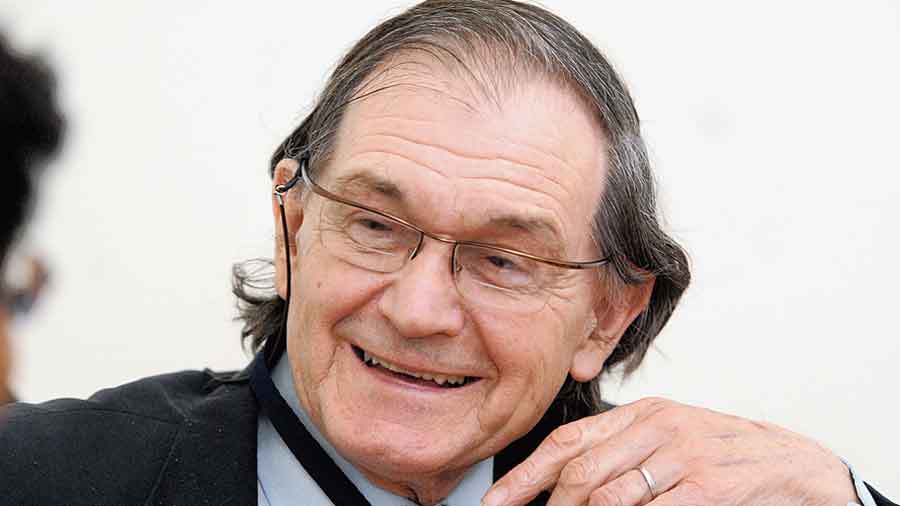I have known Roger Penrose closely for quite some time. He has been visiting Calcutta for more than 25 years. His involvement with Albert Einstein’s general theory of relativity is intense; his other abiding passion is with black holes. In some way, black holes come out of Einstein’s equation, but Einstein refused to believe in their existence. The idea of a massive cosmic body from where light could not escape was first suggested by the English clergyman, John Michell, way back in 1784; he assumed — erroneously — the density of the massive body to be the same as that of the sun. In 1931, the great Indian astrophysicist, Subrahmanyan Chandrasekhar, calculated using the special theory of relativity, that a non-rotating body of electron-degenerate matter above a certain limiting mass — now called Chandrasekhar Limit — at 1.4 solar mass, has no stable solution and thus turns gravitationally unstable. The outstanding Russian physicist, Lev Landau, and the famous Cambridge astronomer, Arthur Eddington, disagreed; in their creative space, there was no room for the black hole.
In the 1960s, in a ‘global’ approach using Quantum Field Theory in curved space time, Penrose’s Cambridge colleague, Stephen Hawking, was looking for a generic solution. Eventually, he discovered the Hawking-Penrose singularity, which led to the Nobel prize this year for Penrose. This was the inception of Black hole thermodynamics and the most spectacular outcome of this theory was the Hawking radiation. The temperature of the Hawking radiation is inversely proportional to the mass of the black hole; with the Hawking radiation, the mass of the black hole goes down and, eventually, it would evaporate completely.
In December 1967, a student suggested the phrase, ‘black hole’, at a lecture by John Wheeler, the science adviser to the president of the United States of America and a front-runner in modern cosmology. The name caught on quickly. The first ‘real’ picture of black holes colliding, leading to the discovery of gravitational waves, showed up last year when Luciano Rezzolla showed it at a Bari Conference in July 2019.
On one occasion, Penrose had explained to me a rudimentary version of his idea of ‘Conformal cyclic cosmology’. It goes as follows: our universe is the universe of this aeon. There existed another aeon before this when there existed another universe. After expanding through space and time for billions of years, the universe cooled off sufficiently and turned into a cosmic grave the size of the entire universe. It turned so cold that the black holes had an intrinsic temperature higher than the ambient universe. The second law of thermodynamics dictates that with the entropy stored within the black holes, the universe’s billions of black holes would burst at once. And that is the ‘big bang’, creating the next universe. The process goes on, destruction followed by creation, from one aeon to another, with no beginning or end.
Is there any proof of such fantastic ideas?
I have invited Penrose to a conference that I am organizing in March 2021. The abstract of the talk is, “Are we Seeing Hawking Points in the Microwave Sky?” What is it that observers have seen? Penrose says in that abstract, “Hawking points represent the conformably compressed Hawking radiation from supermassive black holes in the previous aeon; supermassive black hole is a million / billion times the solar mass, resides usually at the centre of a galaxy, with voracious gravitational appetite. Each such black hole would have devoured an entire galactic cluster, before finally decaying in the form of Hawking radiation, squashed into a single ‘Hawking point’, 8 times the diameter of the full moon.” Then he goes on to add, “an effect that we appear to be actually observing.”
Fred Hoyle and Jayant Narlikar toyed with the idea of a steady-state theory of the universe: destruction, immediately or almost immediately, followed by creation filling up the void. Penrose’s supervisor at Cambridge, Dennis Sciama — my mathematics teacher during my Cambridge undergraduate days —was a champion of the steady-state theory. That got demolished with the experimental discovery of the ‘big bang’ and the associated ‘hiss’ of the expanding universe. Sciama acknowledged his mistake publicly. Penrose has now come up with the brilliant and beautiful idea that there isn’t one ‘big bang’ but a ‘big bang forever’, from one aeon to another to another, making ‘time’ a redundant variable. Our present universe, the product of the ‘big bang’ in this aeon, is, in a sense, the product of the idea of the new steady-state theory of the universe.
I end with one of the most penetrating and profound quotes of Einstein who started it all: “One of the strongest motives leading to art and science is a flight from everyday life with its painful coarseness and bleak tediousness, from the chains of ever changing personal wish.”











